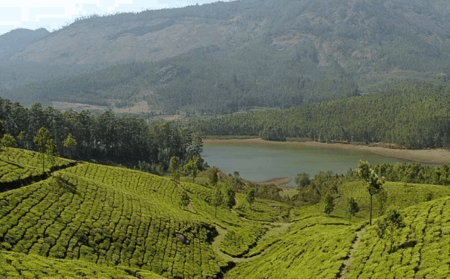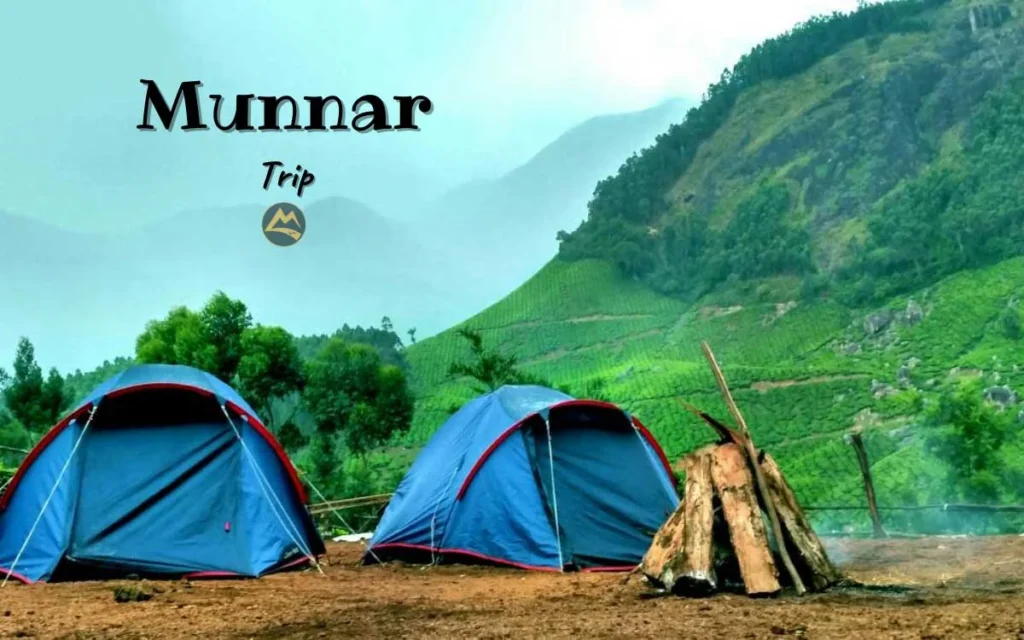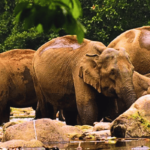Nestled up in the Western Ghats, Munnar is where three streams come together – Mudrapuzha, Nallathanni, and Kundala. Sitting about 1,600 meters above sea level, it used to be the cool spot for the British folks back in the day. Now, it’s a hotspot for honeymooners and anyone looking for a chill getaway, with places to stay for every wallet size. Picture-perfect tea plantations, cute little villages, and winding paths make it a top spot for a vacation. And don’t miss the rare Neelakurinji flower that turns the hills blue every twelve years – next show is in 2030! Anamudi, the tallest peak in South India, stands tall here at over 2,695 meters. What’s cool about Munnar is that no matter when you go, the weather’s always nice, which is pretty rare for these parts. Its history? Well, it’s all about plantations and this guy named John Daniel Munro who fell in love with the place back in 1870. He thought it’d be a great spot to grow stuff, especially around the Kannan Devan Hills.
How to Reach Munnar?
By Flight: Munnar doesn’t have its own airport, but the nearest one is Cochin International Airport, about 110 kilometers away. You can take a cab or Kerala road transport buses from there to Munnar. Another option is Madurai Airport, though it’s a bit farther. Taxi services from Cochin Airport to Munnar usually cost around Rs 3000.
By Train: The closest railway station to Munnar is Aluva, which is about 100 kilometers away. Many trains stop there, and from the station, you can easily find taxis and buses to Munnar at affordable prices. Another nearby station is Angamaly, but Aluva is bigger and has more train stops.
By Road: Munnar is easily reachable from major cities in Kerala with a large number of public buses operating to and from the city. You can also find buses from Tamil Nadu to Munnar at affordable prices. Additionally, buses are available to cities like Kochi (124 km), Thrissur (148 km), Madurai (152 km), and Thiruvananthapuram (281 km). Munnar is well connected by NH-85 to other Indian cities, and you can hire private cars or jeeps for road travel.
Best time to visit Munnar
Munnar in summer, from March to June
Munnar in summer offers a pleasant escape from the intense heat of nearby areas, with temperatures ranging from 19 to 35 degrees Celsius and occasional rain showers. This season is ideal for exploring the tea estates. The pleasant weather attracts many tourists, and numerous activities and attractions are available during this time. However, it’s also the peak season, resulting in crowds. Planning your trip in advance can help avoid last-minute hassles, and be prepared for seasonal surges in activity charges.
Munnar in winter, from December to February
Munnar in winter, experiences its coldest months, with temperatures occasionally dropping below zero. Despite the cold, this season is ideal for honeymooners and all visitors due to the fantastic weather. It’s also perfect for adventure enthusiasts, with opportunities for trekking, hiking, camping, and rappelling activities. However, some may find the extreme cold uncomfortable, especially those who are sensitive to chilly weather.
Munnar in Monsoons (July – August)
During the monsoon season, Munnar showcases its nature at its best, with lush greenery and flourishing wildlife. Though it can be a bit humid, the weather remains cool and windy, with temperatures ranging from 23 to 36 degrees. The rains wash away the dirt, revitalizing the tea plantations and providing great opportunities for nature lovers and photographers. Additionally, since it’s the off-season, accommodation is more affordable. However, some may avoid visiting Munnar during this time due to the possibility of landslides and encountering leeches in grassy areas.
Munnar in Autumn (September – November):
September to November presents an ideal time to explore Munnar, characterized by dry and pleasant weather. This period also marks the blooming season of the Neelakurinji flowers, a unique and exclusive phenomenon of Munnar. These flowers bloom abundantly in Munnar, making it a special destination. Neelakurinji’s remarkable feature is its blooming cycle of once every 12 years, with the last bloom occurring in 2018. Witnessing the mist-covered valleys adorned with Neelakurinji flowers during the early morning hours is truly a heavenly experience.
Author - Jay
Jay is a passionate traveler and a Digital Marketer, The digital marketer traveler embarks on journeys to explore new cultures, seeking inspiration for creative online campaigns that resonate with diverse audiences worldwide
Dandeli Tour Packages, Munnar Tour Packages, Gokarna Murudeshwar Honnavar Tour, Kodiakanal Tour Packages , Kotagiri and Conoor Tour Packages, Coorg Tour Packages, Ooty Tour packages, Wayand Tour Packages, Chikmagalur 2 days tour packages, Agumbe Tour Packages, Malvan Scuba Diving, Coorg Long Weekend Tour Packages, Mulki Kayaking Packages.
Sikkim Tour Packages(6D/5N), Nagaland Tour Packages with Dzukou Valley, Meghalaya Tour Packages(No Trekking), Hornbill Festival Tour With Dzukou Trek- Nagaland (6D/5N), Nagaland Backpacking Trip With Dzukou Valley Trek (6D/5N), Meghalaya Backpacking Trip(6D/5N), Tawang Backpacking Trip (7D/6N), Sikkim Backpacking Trip (6D/5N), Tawang Private Trip, Kaziranga National Park Safari (2D/2N),




